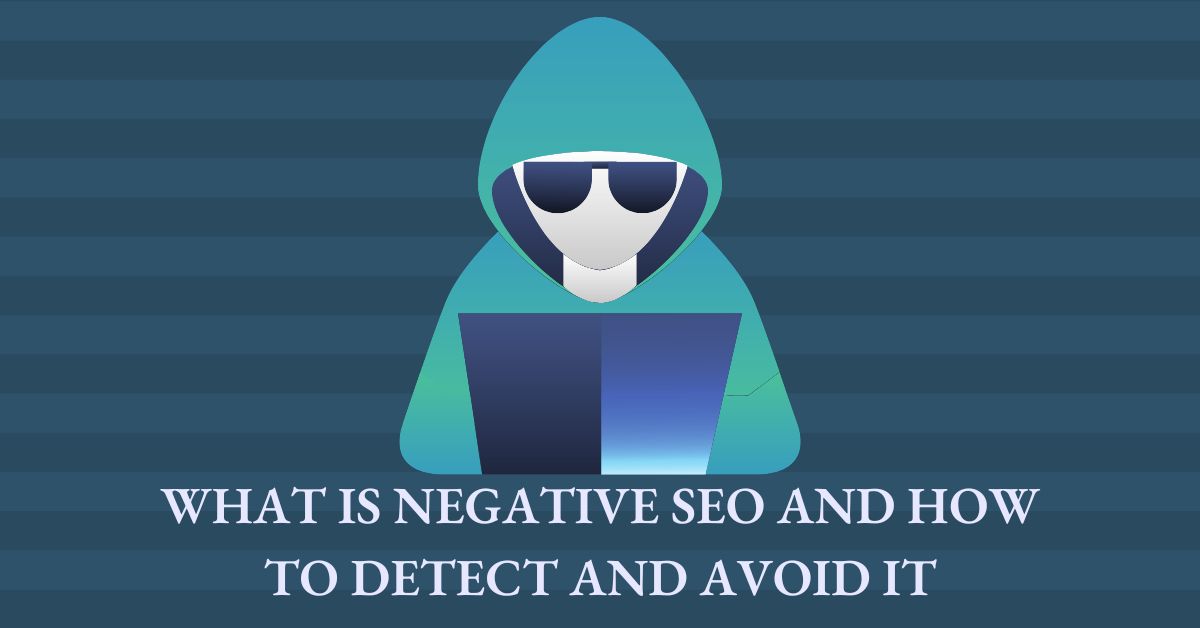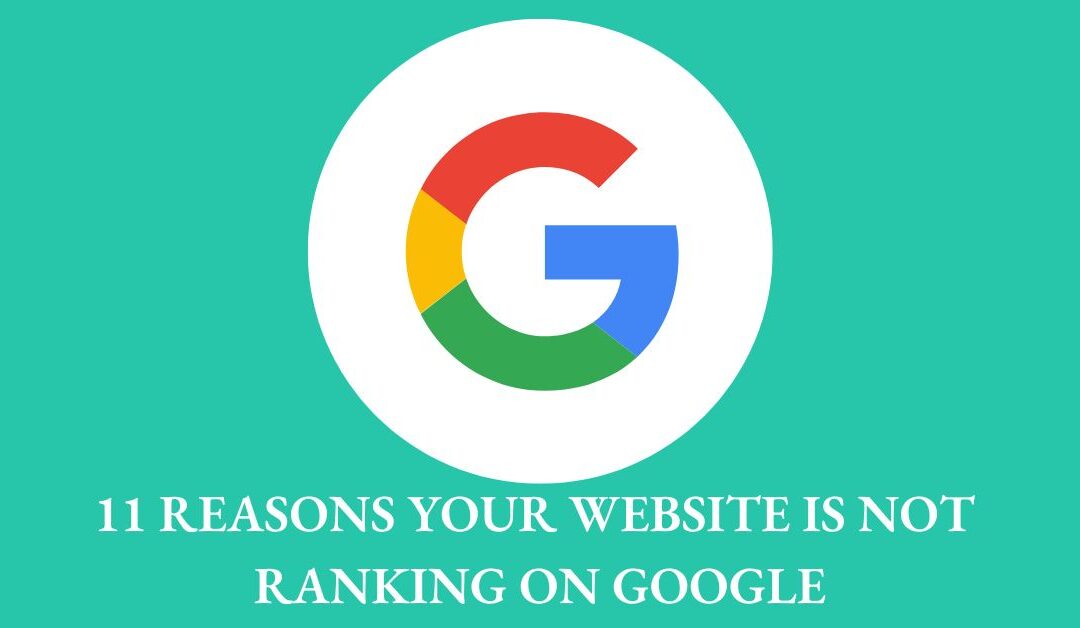We all know that Google takes strict action against sites using black hat SEO techniques. In most cases, those sites are penalized and often de-indexed. However, most website owners do not know that your competitors can also apply those black hat SEO techniques to your website to get you penalized. It is called negative SEO.
Almost three decades ago, when SEO practice was relatively new, many SEO techniques were used to affect search engine rankings. White hat SEO techniques use ethical ways to increase organic traffic and improve ranking. However, black hat techniques are against the guidelines of search engines and use unethical practices to boost traffic and ranking. Keyword stuffing, cloaking, buying backlinks, etc., are typical black hat SEO examples.
Increasing competition has made it more challenging to rank on the first page of Google. As a result, the chances of becoming a victim of negative SEO have also increased. This document will discuss all you need to know about negative SEO, including how harmful it can be and how to detect and avoid it.
What is Negative SEO?
Negative SEO refers to all kinds of malicious activities that aim to sabotage the traffic and the ranking of a competitor’s site. However, a website can also become a victim of unintentional negative SEO attacks. For example, someone can hack your website for fun. Or sometimes, employees or family members also perform black hat SEO tactics assuming that would help the site.
Negative SEO can be broadly divided into on-page and off-page negative SEO.
Off-Page Negative SEO
Off-Page negative SEO attacks happen outside the website and do not change website content or code. Following are the major off-page negative SEO attacks:
1. Link Farming
Link farming is a questionable tactic to gain backlinks, and Google considers it spam. It is because link farms refer to a chain of connected websites created to provide backlinks to a website to increase its ranking. Generally, inbound links have a positive impact on the ranking of a website. But if a page has many inbound links from unrelated websites, Google and other search engines see those links as spam. As a result, your website may get penalized for artificially increasing your ranking.
In negative SEO, the attacker creates link farms and sends spammy links to your website. Alternatively, the attacker may also purchase the services of link farms to send spammy links to your website. As soon as Google notices this action, your site will get penalized. Google cannot know who is responsible for those spammy links.
How to avoid it
Unfortunately, controlling or deciding what type of inbound links you receive is impossible. However, you can conduct regular backlink audits to detect spammy links. Not auditing backlinks is one of the most common SEO mistakes and among the most damaging backlink-building mistakes.
A manual backlink audit of a website can be very time-consuming, so I recommend using backlink management tools. Linkody is an efficient tool for managing backlinks. It has the feature of promptly finding bad links and disavowing them. Several all-in-one SEO tools, such as SEMrush and Serpstat, also can find toxic links. Once you have identified toxic backlinks and created a disavow list, you can submit it to Google Disavow Tool. Google will then disassociate your site from all those links and will not consider those links while ranking your site.
2. Creating Bad Backlinks
The quality of backlinks plays a significant role in determining your Google rank. Even a few bad links can severely affect your ranking. Links from the following sites are toxic for your website:
- Adult or gambling sites.
- Sites in foreign languages.
- Sites with malware or virus.
You may not even know, and your site may have links from any of the above sites. In most instances, your competitor would be behind such negative SEO. If it goes undetected, these links will drastically drop your ranking.
How to avoid it
Yet again, backlink monitoring is the only way to avoid and protect from bad links. Therefore, monitor your backlinks regularly. Tools like SEMrush give each backlink a toxic score, making it easy to add them to the disavow list.
3. Posting Negative Reviews
It is one of the most common and easy-to-implement negative SEO techniques used. Sometimes a competitor will use this technique, and other times it can be someone else who is jealous of your success. The attacker will write the review himself, or he can use other people’s services to write fake bad reviews. Additionally, the attacker may leverage fake profiles to write reviews. As a result, bad reviews affect your business and your Google ranking.
How to avoid it
Although you cannot avoid fake reviews, there are ways to deal with them. For example, you can go to your Google My Business Account and flag any fake reviews as inappropriate. However, if you flag legitimate reviews, Google may penalize you. Therefore, make sure the review is illegitimate before you flag it.
4. Scrapping Content to Create Duplicate
Every user finds fresh and unique content most engaging. Unique content also boosts search engine rankings. However, if the user or search engine finds duplicate content, it has profound implications. Duplicate content will compromise your relationship with customers, and search engines may penalize you. Additionally, Google may index the copied page and consider your page a duplicate.
How to avoid it
A plagiarism checker is a must-have tool, whether you are a blogger or have another site. A plagiarism checker tool checks whether or not your content is copied elsewhere on the web. These tools also identify the source site that has duplicate content.
Grammarly and ProWritingAid are popular plagiarism-checking tools trusted by top bloggers. WhiteSmoke is another excellent tool many website owners use to check for duplicate content. The tools also let you flag duplicate content.
After identifying duplicate content, you must contact the webmaster to remove the copied content. However, report copyright infringement to Google if you still await a satisfactory response. Additionally, ensure you have an up-to-date Terms of Service page stating that copying and republishing the site’s content is strictly prohibited.
Lastly, add self-referring canonical tags to pages. The canonical tag tells Google which page has the original content. As a result, duplicate pages are less likely to rank for the same keyword. Self-referring canonical tags have the URL of the current page as shown below:
<link rel=” canonical” href=” URL of the page”>
5. Sending Fake Requests to Webmaster to Remove Backlinks
Another standard negative SEO is sending fake requests to web admins to remove backlinks. Gaining a quality link requires time and effort. While losing quality links can make you lose authority, your ranking will also drop. Your competitor may send fake requests to web admins requesting them to remove the backlinks without you knowing.
How to avoid it
Once again, backlink monitoring or audit is the only way to recover from any such attack. SEMrush Backlink Audit Tool allows you to set notifications of lost backlinks. A cheaper alternative, Serpstat, also has the feature of detecting lost links.
On-Page Negative SEO
On-page negative SEO happens within your website and alters the code or content of your website. The most common negative SEO attack are:
1. Denial of Service Attack
Denial of service attacks can be detrimental to your business. In such an attack, a hacker bombards the server with thousands of requests per second, causing your site to slow down. Such an attack can affect your rankings as Page load speed is a significant Google ranking factor. You may also lose potential followers or customers, as online users prefer fast-loading sites over slow ones. In the worst case, your site may become completely unavailable, causing substantial financial and reputational loss.
How to avoid it
You can detect a denial of service attack by monitoring the speed of your site. For example, if a website becomes slow and takes a long time to load, it may show that the server is facing thousands of requests per second. Google Pagespeed Insights tool is free and analyzes your website’s speed and gives tips to improve it. Pingdom is another popular service many marketers use to monitor real-time user interaction with your website.
In an instance of slow speed, you should immediately contact your hosting company to know the cause. Once it is sure it is an attack, you can permanently block those IP addresses bombarding your site.
The firewall also plays a significant role in filtering out incoming traffic and blocking traffic from suspicious sites. Ensure you have configured the firewall settings to provide maximum protection.
2. Getting the Site De-indexed from Google
Another common on-page negative SEO is getting your site de-indexed from Google. Although the chances of getting your site de-indexed are rare, the effects can be devastating. There are many ways your competitors can go about it.
For example, they may bribe your employee and get access to your account, or they may hack into your system. In rare cases, it can be one of your ex-employees rather than a competitor. In either case, the attacker may alter the robot.txt file so that Google de-indexes your website. However, if the entire website is de-indexed, it’s straightforward to detect. But it’s challenging to detect if the robot.txt file is changed to ignore only a few pages.
How to avoid it
Remove all accounts associated with the employees you have just fired. Remove all access and permissions as well. Additionally, you should periodically check your robot.txt file.
3. Hacking Site for Content or Code Modification
There can be many motives behind hacking a website. Irrespective of the intention, hacking affects your everyday operations and, in severe cases, may lead to changes that affect your ranking. Sometimes the attacker may have hacked only portions of your site. In either case, you may have full access to your site but do not know the site has been hacked. Once hackers can access your site, they can change content, code, or both. The changes can affect the speed of your site, indexing and crawling behavior, display, etc.
How to avoid it
If your traffic suddenly drops or you receive bad reviews from genuine customers, it may be a sign of website hacking. You can check if your website appears to be hacked with the help of this tool.
It would be best if you acted to protect your website from hackers. Security software, like firewalls and antivirus, is the first defense against cyber attacks. Unfortunately, most cyber-attacks succeed because the security solutions are irrelevant or outdated. It is, therefore, critical to keep any software installed up-to-date.
It is worth mentioning here that vulnerabilities in the software also provide attackers with an opportunity to launch an attack. Therefore, You must look out for patch updates and apply them immediately. The recommended time to apply a patch is 72 hours. This time is critical because many cyber attacks take advantage of vulnerabilities for which the patch already exists.
4. Altering SEO Properties
Altering SEO properties is undoubtedly the most difficult negative SEO to detect. You may have set several SEO properties and may only remember some. For example, if someone has altered alt text for an image, you may never know about it.
Changing your SEO properties may waste all your efforts, negatively affecting your ranking. But the good news is that altering SEO properties takes a lot of work to perform. Although the chances are rare, it can happen.
How to avoid it
Reviewing your SEO properties regularly to detect malicious or unwanted changes and correct them immediately would be best.
5. Changing Internal Links
Every website has many internal links critical to SEO and user experience. However, hacking may change internal links and redirect visitors to a dummy page or a competitor’s website.
How to avoid it
Just like backlinks, monitor your internal links. It can be tedious for big sites, so you should invest in an excellent internal link management tool. LinkWhisper, RankMath, and Internal Link Juicer are three popular plugins to audit and monitor your internal links.
Conclusion
Negative SEO is a severe threat that can silently kill your ranking. However, you may be unable to repair damages if they go undetected for a long time. Regular audits, backlink monitoring, and staying up to date are among the significant steps you should take to detect any negative SEO attack.






0 Comments